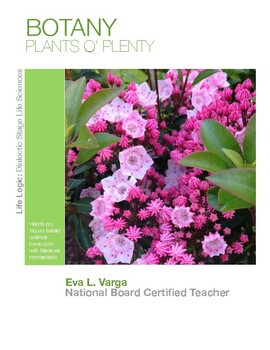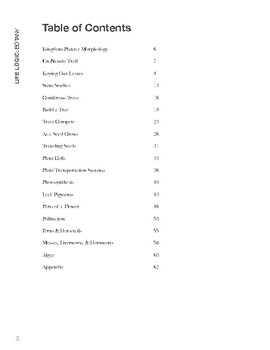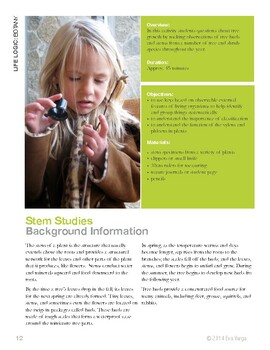Plenty of Plants - Botany Unit Study
Eva Varga
20 Followers
Grade Levels
5th - 8th
Subjects
Resource Type
Standards
NGSSMS-LS1-5
NGSSMS-LS2-3
NGSSMS-LS2-5
NGSSMS-LS1-4
NGSSMS-LS1-6
Formats Included
- PDF
Pages
80 pages
Eva Varga
20 Followers
Description
Plenty O’Plants is a hands-on life science curriculum that provides ample opportunity for kids to explore plant science in-depth. This 10-week unit is full of inquiry-based activities and lesson plans fully outlined for you. Background knowledge, notebooking pages, and suggestions for extension activities are included. 80 page eBook (PDF)
Total Pages
80 pages
Answer Key
N/A
Teaching Duration
3 months
Report this resource to TPT
Reported resources will be reviewed by our team. Report this resource to let us know if this resource violates TPT’s content guidelines.
Standards
to see state-specific standards (only available in the US).
NGSSMS-LS1-5
Construct a scientific explanation based on evidence for how environmental and genetic factors influence the growth of organisms. Examples of local environmental conditions could include availability of food, light, space, and water. Examples of genetic factors could include large breed cattle and species of grass affecting growth of organisms. Examples of evidence could include drought decreasing plant growth, fertilizer increasing plant growth, different varieties of plant seeds growing at different rates in different conditions, and fish growing larger in large ponds than they do in small ponds. Assessment does not include genetic mechanisms, gene regulation, or biochemical processes.
NGSSMS-LS2-3
Develop a model to describe the cycling of matter and flow of energy among living and nonliving parts of an ecosystem. Emphasis is on describing the conservation of matter and flow of energy into and out of various ecosystems, and on defining the boundaries of the system. Assessment does not include the use of chemical reactions to describe the processes.
NGSSMS-LS2-5
Evaluate competing design solutions for maintaining biodiversity and ecosystem services. Examples of ecosystem services could include water purification, nutrient recycling, and prevention of soil erosion. Examples of design solution constraints could include scientific, economic, and social considerations.
NGSSMS-LS1-4
Use argument based on empirical evidence and scientific reasoning to support an explanation for how characteristic animal behaviors and specialized plant structures affect the probability of successful reproduction of animals and plants respectively. Examples of behaviors that affect the probability of animal reproduction could include nest building to protect young from cold, herding of animals to protect young from predators, and vocalization of animals and colorful plumage to attract mates for breeding. Examples of animal behaviors that affect the probability of plant reproduction could include transferring pollen or seeds, and creating conditions for seed germination and growth. Examples of plant structures could include bright flowers attracting butterflies that transfer pollen, flower nectar and odors that attract insects that transfer pollen, and hard shells on nuts that squirrels bury.
NGSSMS-LS1-6
Construct a scientific explanation based on evidence for the role of photosynthesis in the cycling of matter and flow of energy into and out of organisms. Emphasis is on tracing movement of matter and flow of energy. Assessment does not include the biochemical mechanisms of photosynthesis.





